Shortly before I embarked on the screening of Christopher Nolanʼs latest motion picture Dunkirk I filled my face with a gourmet hot dog. Now, it is said that hot dogs such as those are meant to be huge, enjoyed in their full capacity. What we don’t want is to have either end cut off, or the sausage shrunk in scale. Imagine looking down at your plate and wondering what it would have been like in its entirety, how the creator wanted it to be. In my town, unfortunately, I went with the cropped dog, so desperate to eat it, I did not want to at this stage have to venture out to, say, London, Sheffield, or Manchester, where the dogs are consumed in all their intended glory. That said, the bread was toasty, the meat was delicious, and the ketchup/mustard combo made the experience more than worth while. It was still a great hot dog in its somewhat limited presentation.
Unlike the 100 plus venues across the USA and Canada, there are only a select few cinemas in the UK that can accommodate Nolan’s Dunkirk in the way he wanted his audience to see it – on IMAX 70mm. The majority of the picture was shot with IMAX 65mm film (to be shown in 70mm and 35mm theatrically) – cameras also utilized with the filmmaker’s previous efforts The Dark Knight, The Dark Knight Rises, and Interstellar. Long before films were shown digitally and the whole multiplex culture invasion, there were those grand scale movies like Lawrence of Arabia or 2001: A Space Odyssey. Anyone who is anyone in the film world, be it industry professionals, critics, bloggers, the average film-goer, have no doubt witnessed and/or participated in ongoing debates and opinions on the viewing format, so I’ll not get too repetitive or technical here.
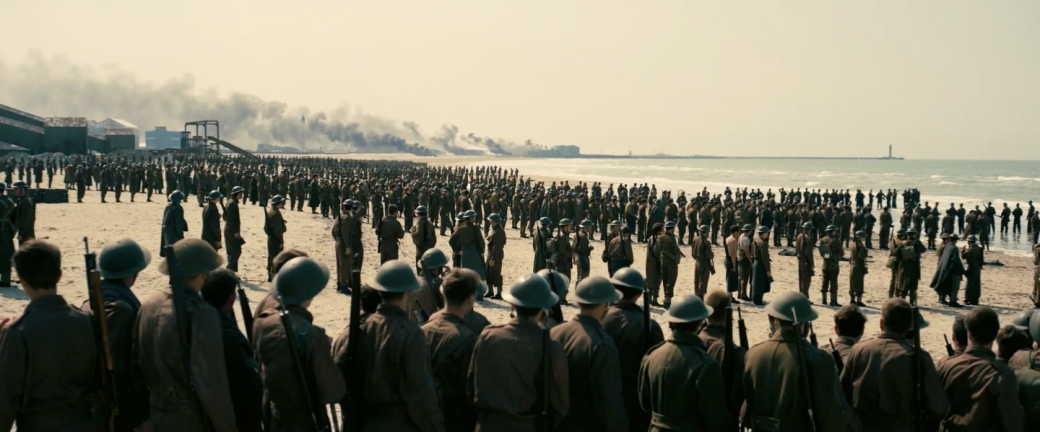
What I will do, quickly, is point any UK folk in the right direction should you wish to see Dunkirk in its grand glory. If you are a frequenter of the capital, then you can sail on over to the BFI IMAX, the Science Museum, Cineworld Leicester Square, or, of course, Odeon Leicester Square. Elsewhere across the country the slim-pickings for choice also include Cineworld Sheffield & IMAX Theatre and Vue Manchester IMAX & The Printworks. But take it from me, settling for the regular screening (a.k.a. on a screen not 26m wide for example) is still a momentous cinema-going experience – the good old (newish) digital cinema projection system, vastly enhanced picture quality and surround sound. For one of the many that as of yet have not seen Dunkirk in IMAX 70mm, I can still safely speak volumes for the wonders of the film.
The opening shot of Dunkirk sees stranded soldiers wandering the desolate streets, leaves of paper scattering through the air. The men drift apart in their ambles, looking for any sign of salvation at either side of the street. The outward movement of the soldiers is almost like Nolan is inviting the full width of the screen from the get go. From this moment on, the director has our full attention, and will be our guide.

Astonishing visual storytelling is Nolan’s prime objective, and the evidence of his previous films have merged with his undoubted talent for film-making to unite in Dunkirk, feels like the film he has always dreamed to make. With hundreds of thousands of soldiers awaiting rescue and marooned on the beaches of Dunkirk, Nolan’s historical tale is told through three interweaving timelines – on land (1 week), at sea (1 day), and in the air (1 hour), each segment flows into the other so magnetically before they all fuse together in seamless, mesmerizing fashion.
Getting the talked-to-death film comparisons out of the way (I mean, Dunkirk has been out for over a week now, I’m very late to the gathering), obvious references to the likes of Saving Private Ryan or Titanic are both valid and divergent. The opening massacre on Spielberg’s Omaha beach is reminiscent to the landscape Nolan has re-imagined, but both films are mercifully and respectfully different entities. Although pretty much non-stop, Dunkirk is not a full length version of Saving Private Ryan‘s book-ended onslaughts of pinging bullets and ravaged bodies. Nolan’s calculated, tense narrative is a more composed, anticipatory one. With Titanic, Cameron garnered much of the chilling impact from those passengers blocked in and drowning. Dunkirk somehow manages to assume a new level, not necessarily better, but the kind of at-sea/under-water suffering, suffocating, that visually you don’t want to imagine – but are given little choice by Nolan. One innovatively emotive moment, a petrified soldier ducks under the water briefly, putting his hands over ears to block out the horror.

Enrapturing moments like these are aplenty here, moments of terror, moments of dread. To that end, there’s so little dialogue in Dunkirk, or so-called character arcs, and thankfully no love interest or focused story other than that of the survival of these men. Yes, men. As an advocate of stories about women in film, I still won’t entertain the notion that Nolan disregards the female war plight here (and that’s for another debate I’m sure). And these are men scared out of their minds – scratch that, young men, boys – wanting to simply go home and be as far away from the fury and despair as possible. There’s no cliched macho B.S. or witty one-liners, instead the panicked faces of hyper-anxious, jittery souls “like fish in a barrel”. And the higher ranking officers are not portrayed as know-it-all untouchables, the grand plan is hazardous and uncharted – though they may detect the coming tide because of the dead bodies floating inland. Or early on as a stricken boat slopes towards the a pier, a distant scream implies an inevitable end. Shiver.
At times throughout Dunkirk there’s a harrowing, heroic sense of realism. Even the voices radioing each other via the Spitfires sound stiff upper lip and era appropriate – you know, like those old wireless broadcasts. I’m fairly certain Nolan favorite Michael Caine plays a part here. The dialogue is muffled here and there, but rather than this be a direct flaw of the film, this has to surely highlight the imperfect communication of the time and place, not to mention the mind-scrambling nature of war.
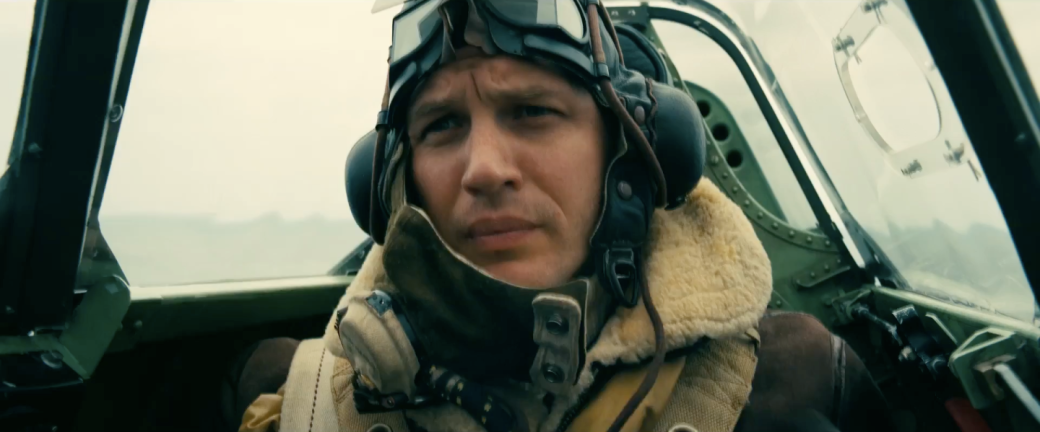
Those dynamic aerial dogfights with the incoming planes of the Luftwaffe are shot with such vivid grand scale, these moments are as close to a flight simulation as you might get on celluloid without appearing stylized. Planes turn, and we turns with them – and so do our stomachs at times. Cinematographer Hoyte van Hoytema has our whole world in his hands here, with point of view shots, prolonged cockpit claustrophobia, sweeping views of the war torn skies. Shall I go on? And there’s no mid-air explosions or perfect hits, these airman have to steer and grind and sweat and surrender many bullets before striking a hit of any significance. It’s a pain-staking, fear-fueled journey, Dunkirk demonstrates the vulnerability to attacks of open land, the sea, and the sky.
The sound design plays a huge part of course. The silence-piercing enemy planes can be heard before they are seen (a frightening thought on its own), thousands of fearful soldier faces turn to the skies. A horrifying siren of soaring danger heading their way, louder and louder, before inevitably dropping their sequence of bombs. Boom, boom, boom, BOOM. It’s so unavoidably tormenting, as though we’ve not seen these kind of scenes before in the movies. Creaking, folding ship walls, under-water cries, engines cutting out, planes hitting the sea from afar, bullets pinging through metal – the impact of the sound effects make this whole ordeal oh so real.
Hans Zimmer ‘s score for Dunkirk is a beautiful terror, a long, lingering siren, it is your heart beating, dictating your blood flow and playing havoc with your nerves. My heart was bump-bumping, that I was all too conscious of. The haunting, ambient score will ring in my ears for days. Weeks even. There’s a continuous hum of doom, a distant tick-tock Zimmer used so devastatingly well in The Thin Red Line, an almost eerie horror score breaks the waters and ruffles the sand. Zimmer ’s tones and notes often get lost among the penetrating sound design – that’s a compliment for both parties.
Christopher Nolan’s reputation is huge, whichever party you attend. I, myself, like his work a lot, some I have loved (Inception; Memento), some I have found infuriatingly off-the-mark (The Dark Knight Rises; Interstellar), so my place is somewhere between acknowledging his brilliance, scratching my head about his projected vision, but mainly waiting for him to execute his crowning moment. It’s been said many times over already in the sackfuls of reviews Dunkirk already has in the bag, but this one might be it. His flair and courage to go for broke with time-shifting story-telling while promising and crafting grand scale cinema kind of defines Nolan. Dunkirk is a nerve-pulling thriller more than an action picture, crammed with human drama, continuous suspense, and some expertly edited time flips and choreography from start to finish. A symphony of a motion picture experience that we should all live through and survive to tell the tale.
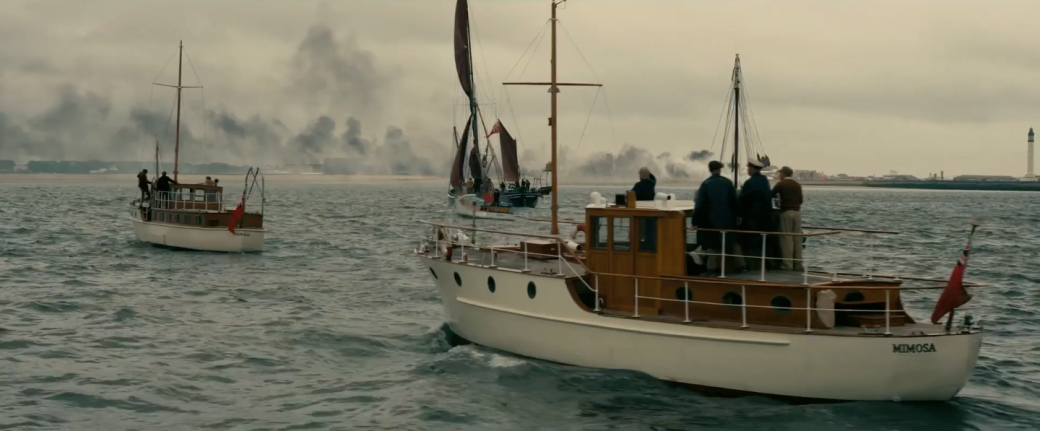






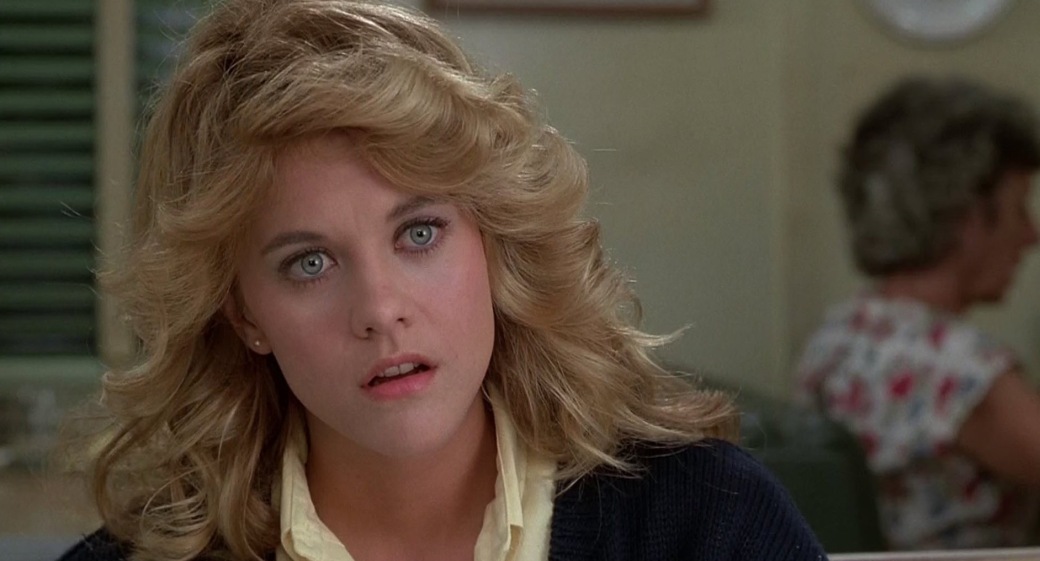
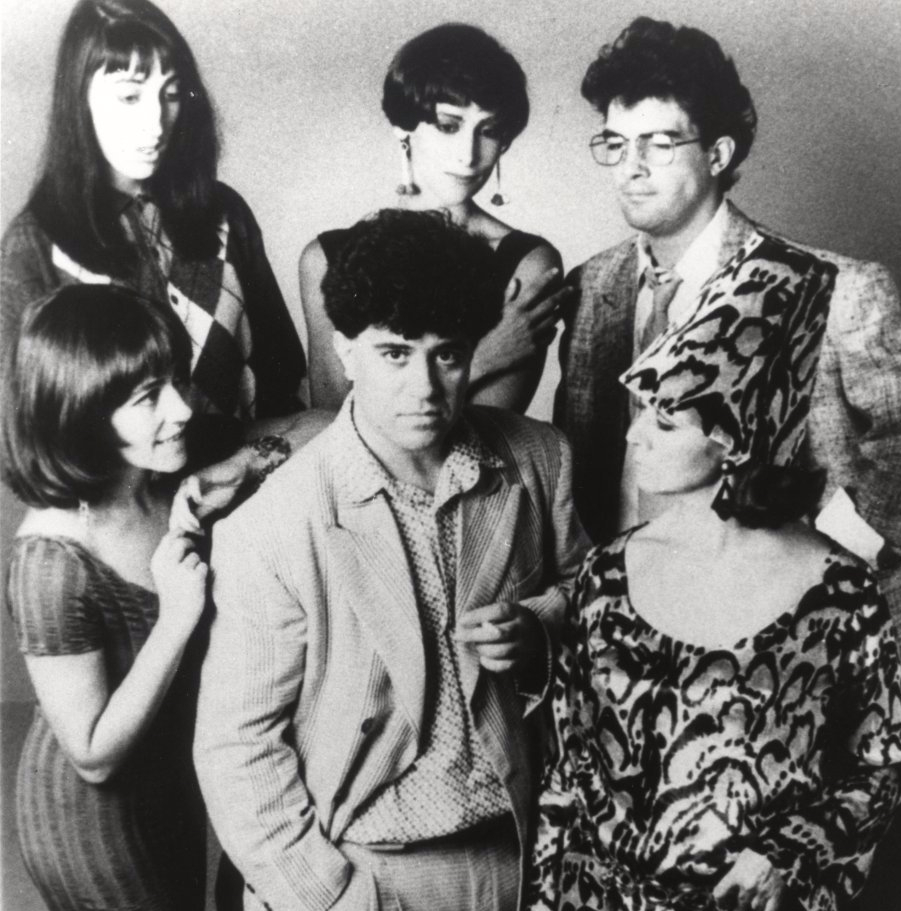

![0 R UMAX PL-II V1.5 [3]](https://writeoutoflacom.wordpress.com/wp-content/uploads/2017/07/the-adventures-of-prince-achmed.jpg?w=1040)
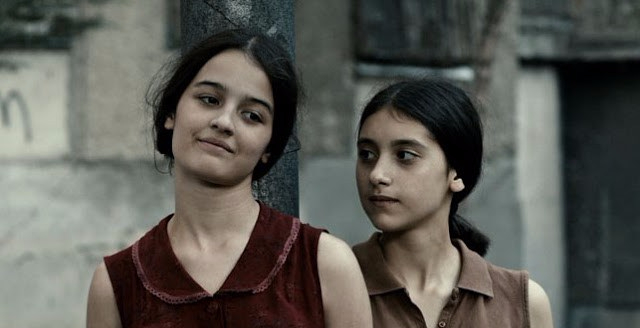
Recent Comments